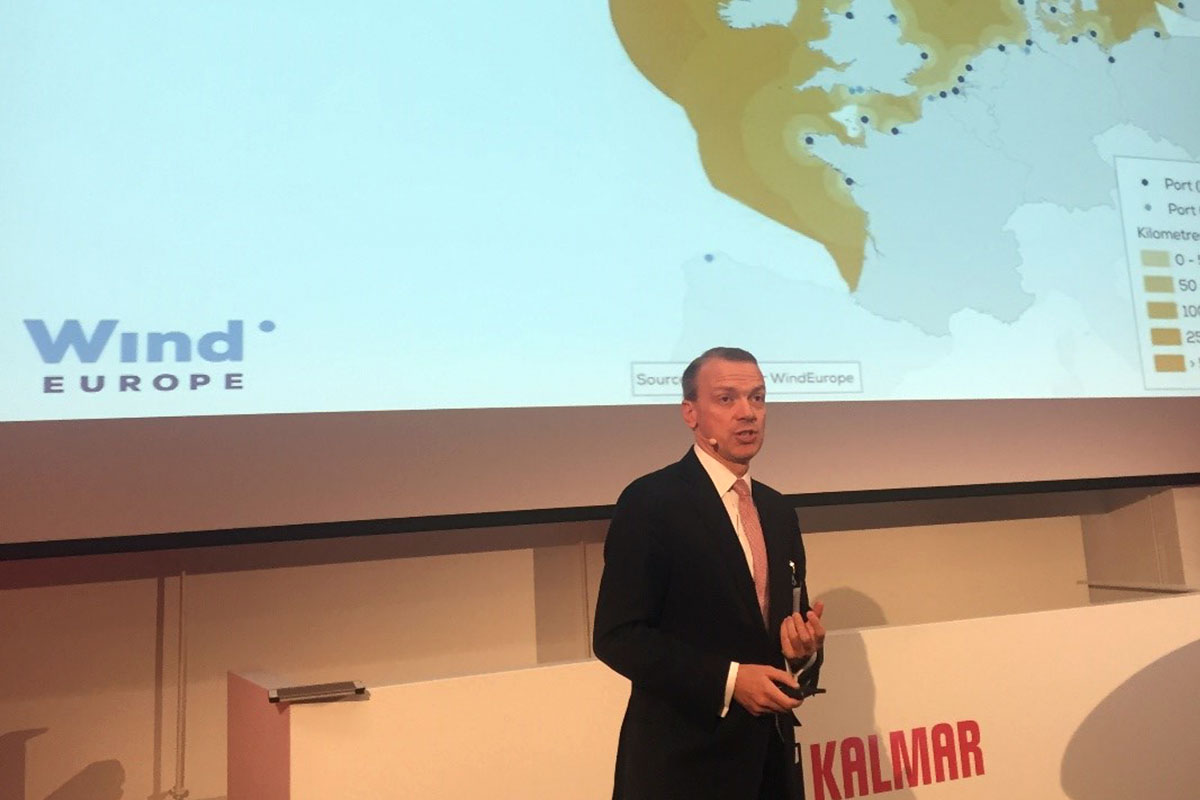13 October 2017
WindEurope CEO Giles Dickson addresses the importance of Offshore Wind Ports with the Port Equipment Manufacturers Association (PEMA)

On 10 October, WindEurope CEO Giles Dickson addressed an audience composed of members of the Port Equipment Manufacturers Association (PEMA) in Tampere, Finland. Dickson gave a global overview of the current market data and the outlook for offshore wind, highlighting the unique role of offshore wind ports in cost reduction and efficiency in offshore wind projects.
Dickson began his speech by highlighting the current state of the industry and stressed the fact that ports are now actively working together to position themselves as key parts of the offshore wind energy supply chain. The sector is expected to grow from 14 GW at the end of June 2017 to 25 GW in 2020, providing a large and long-term market potential in Europe. Offshore wind ports are key to the development of both floating and bottom fixed offshore wind. The value that ports bring to the industry is largely measured by their ability to follow industry trends. Dickson noted that it requires long term planning in order to invest in infrastructure that caters for technology that may not yet be commercial. For those investments to be made, offshore wind ports need clear commitments from governments on a steady pipeline of projects for the post-2020 period.
In order to respond to these developments, WindEurope has created a Wind Ports Platform. Dickson explained that it aims at improving the two-way communication between ports and industry, enhancing cooperation and supporting better integration and development of the supply chain.
Dickson said that location is key to attracting business for the offshore wind sector and ports are becoming the focal point in local and regional development. They offer testing facilities, training centres and host warehouses, as well as offices and operation centres for manufacturers, developers and the supply chain. Their services are required over the entire life-cycle of assets, from installation to operation and maintenance (O&M) and decommissioning. Ports are the natural centre of industrial activity, development and innovation, gathering knowledge, labour and capital for the offshore wind sector.
Dickson concluded by emphasizing the need for Ports to continuously adapt their infrastructure to accommodate for ever larger components, bigger vessels and increased number of activities. Their ability to provide adequate infrastructure, as well as superior services, is now key to the entire value chain of offshore wind. Dickson stressed the fact that early involvement of ports in the planning phase of projects should take priority for the entire offshore wind industry. It would ensure that industry profits from the best value that ports can bring, allowing them to finance infrastructure and making ports strategic partners in delivering increased value to customers, governments and society in general.

